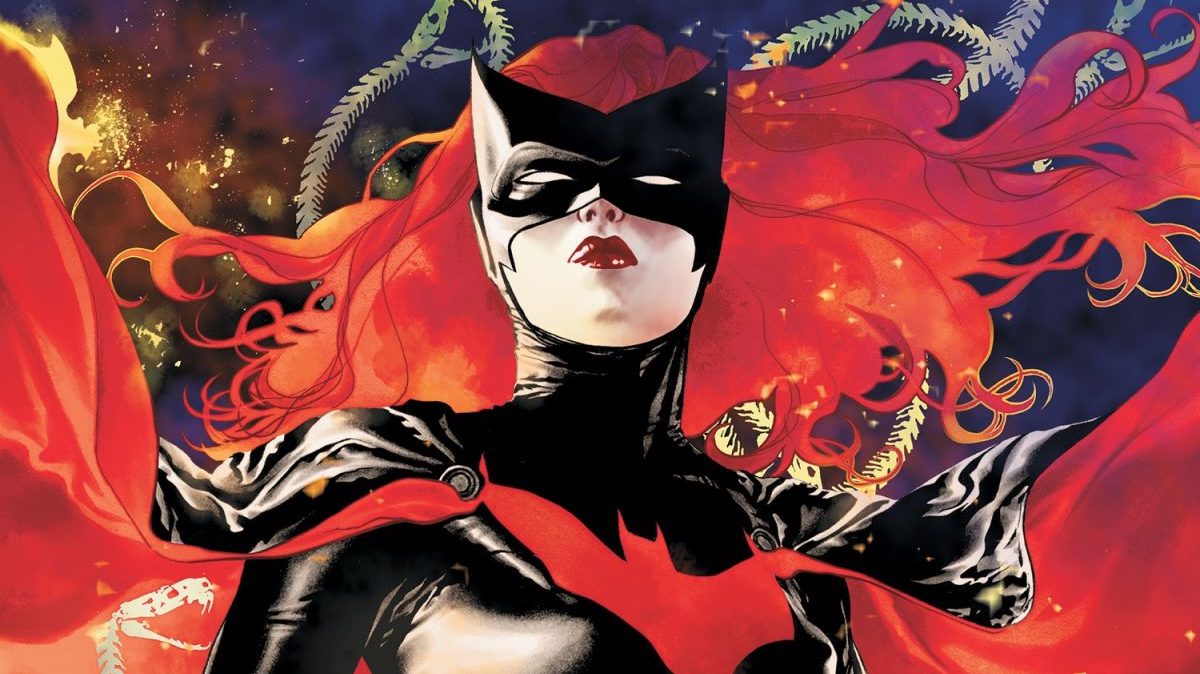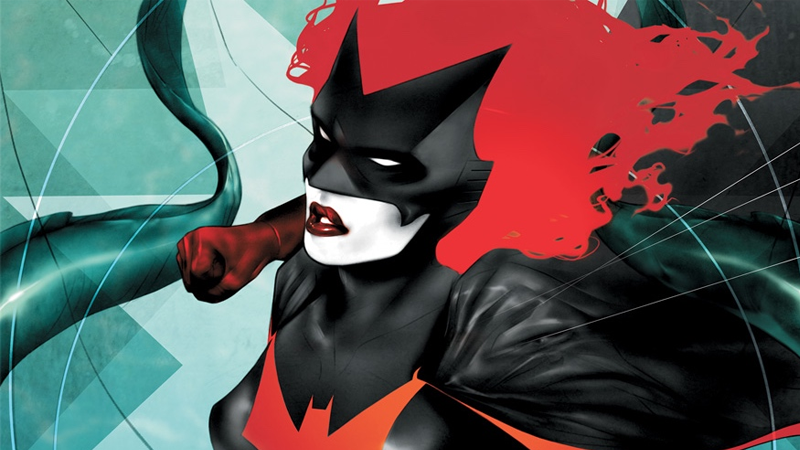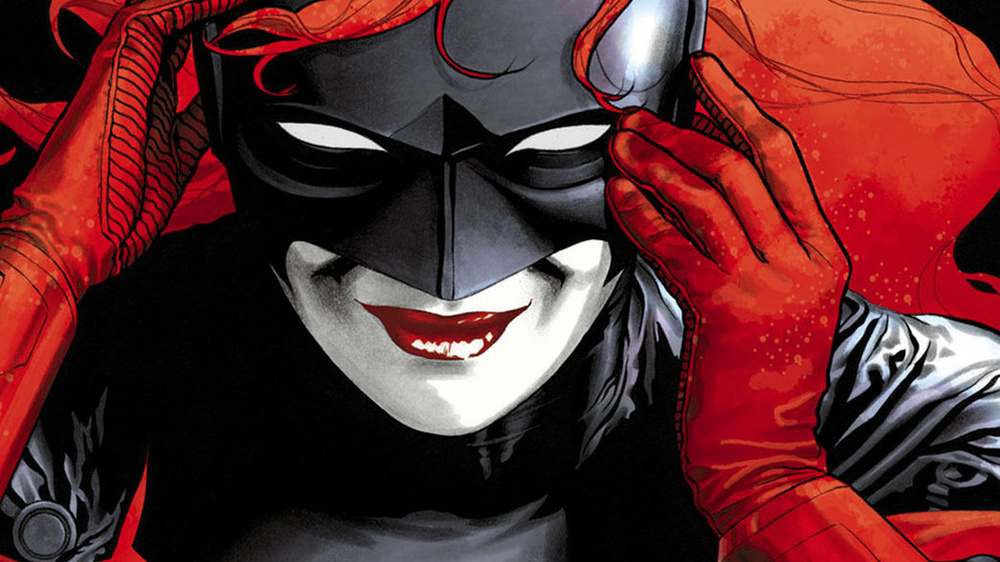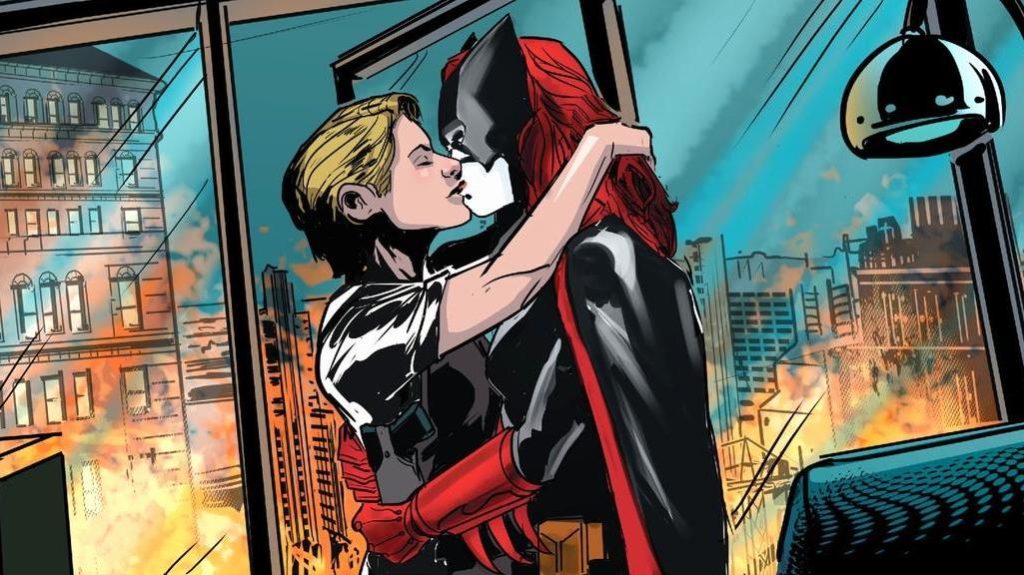The History of Kate Kane and How DC Failed Her As A Lesbian Superhero

Join the community on Reddit for the latest Marvel & DC news!
Comics are a confusing and convoluted medium. From the outrageous characters to the fictional worlds they battle in, very little is straight forward. Am I right? More often than not, unless a universe
Just think about these places, characters, and storylines:
- Metropolis
- Gotham
- Blüdhaven
- Martian Manhunter
- Red Tornado
- Brainiac
- Flashpoint
- Blackest Night
- Crisis On Infinite Earth’s
Kate Kane is a perfect example of comic book confusion. Not only have there been multiple iterations of the character, but each also doesn’t build upon or have anything to do with the other.
Her first appearance happened as a result of the now infamous book, Seduction of the Innocent. The book was created by Fredric Wertham, a name I’ve used many times in articles, and sought to change the medium in ways that had never been done. At the heart of the book laid now proven untrue accusations about comics. Of the accusations, none were as detrimental or as ground-shaking as these:
- The thought that Bruce Wayne and Dick Grayson were homosexual
- The correlation between S&M and Wonder Woman
- Comics books may impair the reading ability of the youth
- Children become desensitized as a result of reading them
The book forced the industry to do an about-face and change most of what it was doing. Gone was everything that children came to love and in its place stood something that barely resembled a comic. From it, the Comics Code Authority was born and the watchful eye of the world turned to comic books. To slow the growing concern of their content, the Comics Code Authority created a set of rules and guidelines that the books would have to adhere to. And adhere they did.
To show that the books being published did exactly what the code had them set to do, the group created a logo that was to be printed on the top right
The Authority created “laws” that the publishers had to follow. Of them, none were more notable
- Any characters or images depicting th
e defamation of authoritative figures, government or otherwise - Gore and disfigurement
- Drugs
- Sexualized scenarios, including any sort of nudity
- Stories showing families and their
disfunction - Profanity
Very few characters could avoid the laws…Batman included. At the time of its release, rumors had run rampant that Batman and his sidekick, Robin were a gay couple. Wertham claimed that due to imagery depicting the two in precarious positions (in bed together), children reading the books may be influenced to follow suit. Yes, it sounds ridiculous. And yes, as history has shown, his reasoning and evidence was debunked but the damage was done.
DC was quick to disprove what Wertham was preaching and in an effort to show that Batman was, in fact, not gay, they created Kathy Kane, Batwoman. Kathy Kane, as opposed to Kate Kane of today’s continuity, is a little different, so let’s talk about her.
In 1956, to cast aside any notion of Batman being gay, Batwoman was introduced as his love interest. (Un)fortunately, this version of the character, while successfully changing the perception of Batman didn’t do too much for women crime fighters. This wasn’t necessarily because she wasn’t any good but more so because DC didn’t really give her a chance to succeed. Remember, the way that women were perceived in the 1950s was much different than how they are today. As such, Kathy Kane was given the proverbial short stick. This meant that instead of tools and weapons that would actually strike fear into the hearts of her enemies, Kathy carried a purse littered with cosmetic weapons. Yes, you read that correctly. Cosmetic weapons with the most ridiculous of them all being a powder applicator that blinded her foes with, well, face powder.
In the grand scheme of things, Kathy Kane was a mere blip on the Batwoman radar. But that doesn’t mean she wasn’t important. Even though this version of the character was short-lived (DC killed her off after they were done with her), she had laid the groundwork for Batwoman.
By the 2000s, DC,
This Batwoman wasn’t like the Batwoman of old. In fact, the only thing about the two that’s even close to one another is their names. But even they aren’t the same. Whereas the 1950s Batwoman was merely a plot point to disprove Batman’s sexuality, this one had a backstory as impressive and layered as the Earth’s crust.

At a relatively young age, Kate Kane, a young, wealthy, lesbian, Jewish socialite was traumatized by the kidnapping and murder of both her sister and mother. Left to live with her father, when she could she joined the Marines as a means to impress him. Unfortunately, Kate was discharged from service after she came out as gay.
And why?
Kate Kane came out during a period that saw the military use the “Don’t ask, don’t tell” act.
For reference, the “Don’t ask, don’t tell” act was the official military policy for gays, lesbians, and bisexuals who were apart of military service. The policy, which ran from February 28, 1994 to September 20, 2011 was put into place by the Clinton Administration. It was put into place to prevent military personnel from harassing those who were gay, lesbian, and bisexual. At first glance, the policy may seem like a means to protect those who may be harassed for their sexuality, but it really wasn’t. Instead, the act prohibited any gay, lesbian, or bisexual person from talking about their relationships, discussing plans for marriage, or even disclosing their sexual orientation while in service. The policy stated that if any member of service did any of the above, they’d be terminated.
And what was it’s argument for termination?
Simply by engaging in any of those acts, the person had created a risk to the morale of those around them, violated the discipline that the military stood for, and caused the once cohesive unit to fall apart. This meant that although the military tolerated gays, lesbians, and bisexuals, it was not in the best interest of the military to have them within their ranks.
Now discharged from the Marines for disclosing her sexual orientation, Kate walked aimlessly through life. She was left without purpose and betrayed by those she had come to respect. That is until Batman showed up one evening and saved her from a mugger. If you think about it, the very notion of Batman saving her from a mugger doesn’t make sense. After all, a trained Marine should have no problem handling a run of the mill mugger. But alas, this is the comics and he did save her.
Sensing the thrill that comes with being Batman, Kate decided to change her life and become a masked crimefighter. With her introduction, DC had the chance to do something very unique and special. The question was, “Would they?”
Almost immediately, the audience learned that Kate had a girlfriend, Renee Montoya, and was Jewish…both a little out of the norm for the publisher. In fact, within a few issues of her introduction, Kate and Renee were found celebrating Hanukkah together. Although this may seem unimportant, I urge you to look past how unimportant it seems and begin to understand how important it was. Yes, by today’s standards a lesbian couple in the spotlight seems trivial but remember, at the time, Kate and Renee were the only lesbian couple in mainstream comics. The two were breaking ground and setting new standards and didn’t even know it. Almost immediately, readers of the book knew that this version of the character was embarking on a much different path than Kathy Kane.
For as long as Batman has protected Gotham, he has understood one thing; the city can never be truly saved. He knows that his efforts, even though they work, can never really restore law and order to Gotham. He knows that to restore law and order means that he must do that which he’s promised he’d never do…kill. Kate Kane, however, doesn’t buy into this. She’s an optimist who believes that the city can be saved. But to do it means that she must differentiate herself from Batman. She, unlike Batman, believes that in order to save Gotham, she must rid it of all that harms it. This means that she does not and will not follow his no-kill code if she has the opportunity to better Gotham.
Shortly after her relaunch, Marguerite Bennett, an openly gay writer, was hired to write the character. Of Kate she said this, “Kate is a queer Jewish woman in a world that has turned even more violent and hostile to who she is, before she even put on the cowl and mask. Her identity as a superheroine is a direct product of the contempt and discrimination she faced, for better or for worse. Frankly, she could have had a supervillain origin from the same story, but she chose, actively and with intent, to make the world a better and not a worse place. She chooses. Her identity is only not defined by whom she loves, but also by who she is. She lives and acts in defiance of what other people would have her be.“

And she couldn’t be more right.
She, more than most, has battled adversity in her past and uses it to fuel her future. I dare say that of all the superheroes in existence, none are as grounded in what they do as Kate Kane. She is the literal definition of an everyday woman doing what’s best for the world. Kate is not invincible, doesn’t have heightened abilities (outside of her Marine training), isn’t immortal or possess any “super” attribute associated with superheroes. She isn’t Mera, Big Barda, Wonder Woman, Raven, or Starfire. She’s Batwoman…a everyday woman who chooses to put herself in out of the ordinary situations for the good of the world. No different than if you or I were to fight crime, Kate goes home each day beaten and battered because she believes that the world can be better.
And more important than each of these, Kate doesn’t let her past dictate her future. Don’t get me wrong, Kate is a product of her past but she doesn’t let her past hinder her or cast a dark shadow over all that surrounds her…something that many of us could learn from.
Kate Kane, whether she aimed to or not, opened doors that desperately needed to be opened.
Let me explain.
Even though her relationship with Renee Montoya wasn’t meant to be, Kate eventually found love with Maggie Sawyer. The two quickly became the launching point of comic book acceptance for gay and lesbian characters. Not only did they share a much talked about “on page” kiss, in issue #17 of the series, but Kate also proposed to Maggie and Maggie accepted. If that doesn’t blow your mind, re-read it. This moment was one of the most important moments in comics history. It signified the first time in mainstream comics that a lesbian proposal happened.
I can’t say this enough.
You need to understand and digest the importance of this moment. Never before had one of the big two publishers (Marvel or DC) done something like this. Certainly, comic books characters had come out as gay before but never had there been a proposal of this magnitude.
Sadly for Kate Kane, it was never meant to be.
At the eleventh hour, DC nixed the idea of a lesbian wedding. Although they claim it happened during a period that saw many of their couples cut ties (according to the company, heroes don’t get married) the damage had been done. Not only did the decision cause a fan backlash, but it also caused the writers who were writing the book to walk away from it. DC’s decision to stop the wedding was almost as, if not bigger than the proposal. Of it, the writers who walked off said this, “We felt that the series and characters should always be moving forward, to keep changing and evolving…We’re both heartbroken over leaving, but we feel strongly that you all deserve stories that push the character and the series forward.”
And even though the writers left, the company stuck to their decision.
In fact, at a
Sure, perfect characters make for a boring read but I call bullshit. The company was wrong and they were too fixated on their reputation to see it. Kate’s wedding afforded them the opportunity to do something and talk about something that no other company had the luxury of doing.
Think about it.
DC had the perfect opportunity to shed light on a subject that very few publishers have had the gumption to shed light on…divorce among gays and lesbians.

As gay marriages rise and they gain more and more real-world acceptance, so too does divorce. I mean, DC had the chance to explore both Kate and Maggie as they try to amalgamate back into real-world settings. And this very simple, yet important notion is something that has begun to creep into everyday conversation and political agendas.
What happens when a gay or lesbian marriage fails?
I’ll tell you what happens. Those against the marriages in the first place begin to speak out with playground “I told you so’s”. Questions like whether or not the marriage should’ve happened in the first place will invariably come up.
If this seems unfair to you, you’re right. It is. This, however, is the reality of it. Those who advocated against the marriages in the first place will put the idea of marriage firmly back under the microscope.
This is what DC could’ve talked and raised awareness about had they not nixed the wedding. Kate Kane could’ve been at the focal point of human advancement and evolution. Unfortunately DC wasn’t ready and instead, we received some bullshit excuse as to why they did it.
No matter what your beliefs are about gay and lesbian weddings, comic books once again had the chance to be progressive. In years past, we’ve watched them discuss political, religious, and other real-world topics. And they did so in times that it wasn’t considered acceptable to bring the topics up. We’ve seen comics challenge thoughts and beliefs when nobody would. And most important, we’ve seen them stand up and give a voice to those who have been silenced.
This is what DC missed out on. And I can’t stress this enough. At the time, they were wrong for doing it.
Kate Kane is a kind of special that so few characters ever get to. She’s strong
I’ve said it before and I’ll say it again. Comic books are the gateway to understanding the world just a little bit better.
So, may they be around forever.
Cheers,
Joel
Liked this article? Join the community on Reddit for the latest Marvel & DC news!

